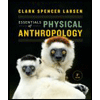pollen, seeds, wood, fruit, spores, and microbiology, plus plant environments and ecology (Plant Forensics: Cracking Criminal Cases, n.d.). The aim is to link plant evidence with a crime, such as placing a suspect at a crime scene through analysis of pollen or seed particles found on their clothing. Forensic botany can be used to determine the difference between accidental death, suicide or murder and can provide valuable information that contributes to the reconstruction of a specific chain of criminal events (Caccianiga et al., 2020). However, there are several factors that can affect the accuracy of PMI estimation in forensic botany. These include environmental factors such as temperature, humidity, and element exposure; body habitus and clothing; burial depth; insect activity; and plant species (Paul, 2013: What Is Forensic Botany?, 2019).
References
Caccianiga, M., Caccia, G., Mazzarelli, D., Salsarola, D., Poppa, P., Gaudio, D., Cappella, A., Franceschetti, L., Tambuzzi, S., Maggioni, L., & Cattaneo, C. (2020). Common and much less common scenarios in which botany is crucial for forensic pathologist and anthropologists: A series of eight case studies. International Journal of Legal Medicine, 135(3), 1067-1077. https://doi.org/10.1007/s00414-020-02456-0
Paul, K. V. R. (2013). Assessment of Post Mortem Interval, (PMI) from Forensic Entomotoxicological Studies of Larvae and Flies. Entomology, Ornithology, & Herpatology, 02(01). https://doi.org/10.4172/2161-0983.1000104
Wilson-Taylor, R. J., & Dautartas, A. M. (2017). Time since death estimation and bone
weathering: The postmortem interval. In N. R. Langley & M. A. Tersigni-Tarrant (Eds.), Forensic anthropology: A comprehensive introduction (2nd ed., pp. 274-306). CRC Press.
What is forensic botany? (2019, July 30). Sciencing. https://sciencing.com/forensic-
botany-14631.html

 Essentials of Physical Anthropology (Third Editio...AnthropologyISBN:9780393938661Author:Clark Spencer LarsenPublisher:W. W. Norton & Company
Essentials of Physical Anthropology (Third Editio...AnthropologyISBN:9780393938661Author:Clark Spencer LarsenPublisher:W. W. Norton & Company